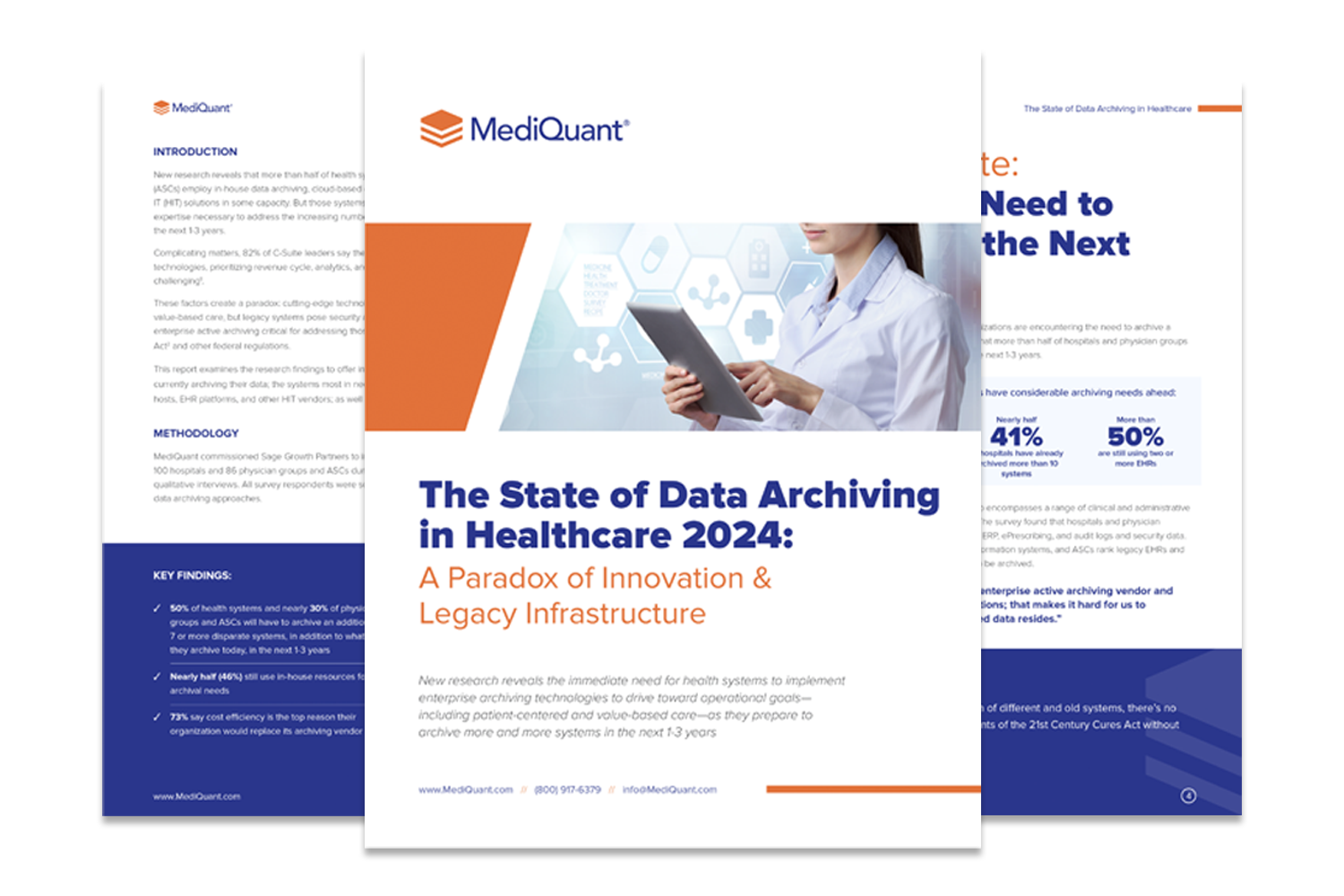Data migration is the organized extraction and transformation of data in a legacy system to an active application. Healthcare organizations have two options when an old EHR/EMR system has to be retired – to keep the patient data in the legacy database or convert it to data within the active EHR application. If you’re deciding on whether to migrate or leave the old system intact, take some time to read these benefits of patient data migration.
1. Avoid Keeping Legacy Systems
In both small family medicine practices and large regional healthcare organizations, system changes can occur. However, after decommissioning an EHR system, you must retain the historical medical data for audits and regulatory compliance.
Keeping the legacy system on with its subscription or maintenance may be alright for a few months. But as you start to make full use of the new system, you will be paying the same fee for historical data access.
Also, to reduce the risk of a security breach or unauthorized access, it is better to commission a data migration project and eliminate the need for the legacy application going forward.
2. Reduce IT Costs
Keeping multiple EHRs to hold patient records is not economical for most practices. The old system will most likely require paying licensing, subscription, or maintenance fees. Your organization may also have to keep staff who need special training to use the old EHR.
When you successfully migrate data to the new system, you can eliminate these costs, and data migration costs can be recovered within two years.
You can use the cost savings you earn from successful data migration to develop more applications to improve patient care productivity and quality.
3. Maximize Productivity
Your organization can increase clinicians’ productivity through data migration. Migration puts all the historical medical data, such as allergies, patient safety, decision support, etc., from one data source on a single interface.
Doctors don’t need to go through a separate log-in process to access vital patient information before making a diagnosis or prescribing treatment. Patients will also benefit from this improved efficiency. Their doctor will have fewer data processing tasks to do and more time to focus on taking care of them.
4. Satisfy Regulatory Requirements
Data migration simplifies data access for audit requests. It also enhances compliance with both state and federal requirements for patient data retention.
Requests for historical medical information can come at any time. When all the data needed for the request is not residing in a central location, fulfilling the request can be extremely difficult.
Apart from responding to requests for information, a well-managed data repository will simplify and speed up reporting to regulatory programs that measure patient care quality, like PQRS and PCMH.
5. Use Electronic Prescription
Electronic prescription has many benefits, but these may be elusive if all patient data is not accessible when making the prescription.
With full patient data accessible at all times, physicians can instantly access all patient safety information and a history of medications and allergies. This will save time, increase prescription accuracy, and lower the total cost of healthcare.
Discover How to Transform Your Practice With Patient Data Migration
Call MediQuant today at 844.286.8683 to schedule a free demo of our healthcare data migration solutions. We are also ready to promptly reply to any messages you submit through our contact page.


